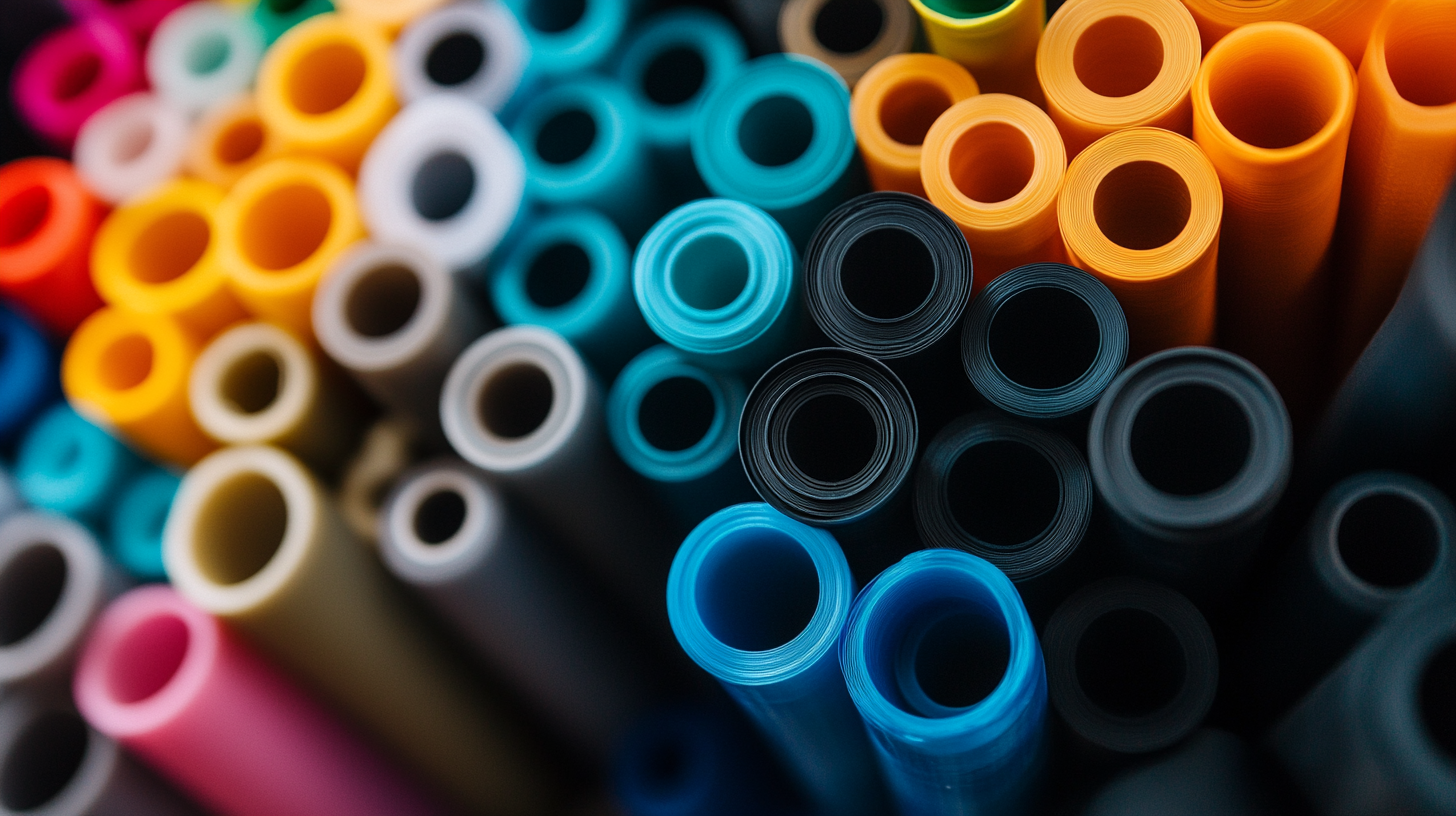Comprehensive Insights on 3D Printing Materials for Global Buyers
In recent years, the 3D printing industry has experienced exponential growth, driven by advancements in technology and a broadening range of applications across various sectors. According to a report by Wohlers Associates, the global 3D printing market size was valued at approximately $12.6 billion in 2020 and is projected to reach $34.8 billion by 2026, growing at a CAGR of 18.0%. A significant part of this growth is attributed to the diversification and innovation in 3D printing materials, which are essential for achieving high-quality outputs and meeting specific industry requirements.
As the demand for customized and complex designs rises, understanding the various 3D printing materials available becomes imperative for global buyers. Different materials, including plastics, metals, and ceramics, offer unique properties suited to specific applications, from prototyping to end-use production. According to a research report from Grand View Research, the plastic segment accounted for over 50% of the revenue share in 2020, highlighting its dominance and importance in the sector. This blog aims to provide comprehensive insights into the diverse landscape of 3D printing materials, equipping buyers with the knowledge necessary to make informed decisions in this fast-evolving market.

Key Considerations for Choosing 3D Printing Materials in Global Markets
When selecting 3D printing materials in global markets, buyers must consider several key factors that can significantly impact the quality, efficiency, and cost-effectiveness of their projects. According to a recent report by Wohlers Associates, the global 3D printing market is anticipated to reach $42.4 billion by 2026, highlighting the importance of making informed choices in materials that can enhance competitiveness and innovation. One of the primary considerations is the material's mechanical and thermal properties. For example, materials like Nylon and TPU are favored for their flexibility and durability in the production of functional prototypes and end-use parts. In contrast, materials such as ABS and PLA are often chosen for their ease of printability and lower costs, making them suitable for various applications. A study published in "Additive Manufacturing" journal noted that approximately 30% of firms prioritize mechanical performance when selecting materials, reflecting the critical role these characteristics play in application success. Moreover, environmental sustainability is becoming increasingly important in material selection. With around 20% of the global 3D printing market now focusing on eco-friendly materials, options like biodegradable filaments are gaining traction. Buying trends indicate that manufacturers and consumers alike are willing to invest in sustainable materials that minimize environmental impact while maintaining high performance. This shift not only meets regulatory requirements but also aligns with the growing consumer demand for green products. Ultimately, buyers in the global market should also consider the availability and supply chain stability of their chosen materials. Disruptions in supply chains, as seen during global events like the COVID-19 pandemic, can severely impact production timelines. Thus, understanding the sourcing of materials and their resilience in varying geopolitical climates is essential for ensuring uninterrupted operations and strategic planning in 3D printing projects.

An Overview of Popular 3D Printing Materials and Their Applications
The landscape of 3D printing materials is continuously evolving, particularly in the realm of micro and nano device manufacturing. Recent advancements have highlighted the potential of using 3D printing technology to create intricate micro-nano devices, which have applications in fields ranging from electronics to biomedicine. As the global demand for precise and customized solutions increases, the integration of specialized materials, such as photopolymers and metal powders, has become essential.
In parallel, the construction industry is witnessing a rise in the use of 3D printing for cementitious materials. A comprehensive review of recent advancements has revealed that various prototyping technologies are now available for effectively printing concrete structures. This innovative approach not only streamlines the construction process but also enhances sustainability by reducing material waste. By 2025, the global market for 3D printing materials is projected to reach an impressive $6.6 billion, indicating the substantial investment and interest in these technologies.
Moreover, the aerospace sector is also leveraging advanced 3D printing techniques to produce lightweight components through polymer composites. According to recent analyses, the application of fibre-reinforced materials is gaining traction, offering increased strength and durability without compromising on weight. This trend aligns with the industry's ongoing pursuit of efficiency and performance, further solidifying the role of 3D printing as a transformative technology across various sectors.

Evaluating Cost-Effectiveness of Different 3D Printing Materials
When assessing the cost-effectiveness of different 3D printing materials, it's essential to understand the myriad options available and their respective applications. Popular materials such as PLA, ABS, and PETG each bring unique properties to the table, influencing not only their price but also their suitability for various projects. For example, PLA is often favored for its low cost and user-friendly traits, making it an excellent choice for beginners and non-industrial applications. However, while its affordability is appealing, it may not withstand higher temperatures and stresses compared to other materials.
On the other end of the spectrum, materials like nylon and TPU offer higher durability and flexibility but come with a steeper price tag. When evaluating cost-effectiveness, it’s vital to consider the longevity and durability of the final product. A more expensive material may reduce overall costs in the long run by extending the lifespan of printed objects and minimizing the need for replacements. It’s also crucial to include the associated costs of post-processing, such as sanding, painting, or assembling, which can vary dramatically with different materials.
Furthermore, understanding the specific requirements of a project can help in selecting the right material that fits both the budget and the functional needs. For instance, medical applications may necessitate biocompatible materials, which, despite being pricier, offer essential safety and compliance benefits. Thus, a thorough evaluation of the functional characteristics against the material costs will guide global buyers to make informed decisions that align with their project requirements and financial constraints.

Sustainable Practices in 3D Printing Material Selection
Sustainable practices in 3D printing material selection have become increasingly crucial as industries seek to lessen their environmental impact. One promising direction involves the use of biodegradable plastics, such as polylactic acid (PLA), which can be modified through co-blending with other materials to enhance their performance while maintaining sustainability. This innovative approach not only improves the mechanical properties of the material but also supports circular economy principles by enabling the recycling and repurposing of waste materials.
Another aspect gaining traction is the advancement in 3D concrete printing. By leveraging a range of sustainable materials and optimizing toolpath strategies, manufacturers can significantly reduce waste and energy consumption. Researchers are actively exploring the potential for integrating biomass waste into 3D printed materials, which exemplifies the shift toward a more eco-friendly production process. These developments underscore a broader vision for a sustainable 3D printing ecosystem that maximizes resource efficiency and minimizes environmental footprints.
Moreover, initiatives that address the entire lifecycle of 3D printed products are crucial. Incorporating design considerations that facilitate recycling or biodegradability will ensure that products do not end up as harmful waste. As advancements in material sciences and engineering continue to evolve, the commitment to sustainable practices in additive manufacturing will pave the way for a more responsible future in production and consumption.
Emerging Trends in 3D Printing Materials for Future Innovations
As 3D printing technology evolves, the materials used in this field are also undergoing significant transformations, aligning with the needs of various industries. According to a recent report by Grand View Research, the global 3D printing materials market is poised to reach USD 7.86 billion by 2027, growing at a compound annual growth rate (CAGR) of 21.0% from 2020. This market expansion signals an urgent demand for innovative materials that can cater to new applications and enhance the performance of 3D printed products.
Emerging trends indicate a strong shift towards bio-based and sustainable materials. A report from SmarTech Analysis highlights that bio-derived materials, such as polylactic acid (PLA), are becoming increasingly popular due to their environmental benefits. Furthermore, advancements in composite materials have led to the integration of carbon fibers and metal powders, enabling the manufacture of lightweight and high-strength components. These innovations not only improve the mechanical properties of printed parts but also provide solutions for industries ranging from aerospace to healthcare.
Moreover, the advent of smart materials into the 3D printing sector is becoming a notable trend. Self-healing polymers and shape-memory alloys are paving the way for applications that require adaptive and reactive properties. According to a study by Market Research Future, the smart materials market within the 3D printing sector is expected to grow rapidly, driven by advancements in material science and the increasing complexity of end-use applications. This trend showcases how the intersection of technology and material science can lead to unprecedented innovations in the manufacturing landscape.
